Abstract
We describe the disease spectrum and socio-demographic and epidemiological features of an epidemic of cholera due to a new pathogen, Vibrio cholerae O139, in patients attending a very large hospital in the metropolitan city of Dhaka, Bangladesh. This hospital treats 70,000-90,000 patients a year with diarrhoeal diseases. A 4% systematic sample of 1854 patients attending from January to April 1993 were studied. Five hundred and two (27%) of the 1854 patients were culture positive for V. cholerae O139 and 63 (3%) were culture positive for V. cholerae O1 biotype El Tor. Patients with V. cholerae O139 were mainly adults with a short history of watery diarrhoea. Eight-three percent of patients had moderate to severe dehydration. All recovered except one 80-year-old man with compromised renal function who died. Seventy-eight percent of patients required initial intravenous rehydration followed by oral rehydration therapy with rice ORS; they also received tetracycline to reduce diarrhoea severity. Most patients were from urban slums with inadequate sanitation facilities and hygiene practices. The newly recognized V. cholerae O139 infection produced an epidemic of severe dehydrating diarrhoea indistinguishable from clinical cholera in a population which experiences two epidemic peaks of cholera in a year due to V. cholerae O1. Infection with the latter does not appear to confer any cross-protection from V. cholerae O139. The new pathogen suppressed, albeit temporarily, V. cholerae O1. Unlike other non-O1 serogroups of V. cholerae this new serogroup appears to have epidemic potential.
Full text
PDF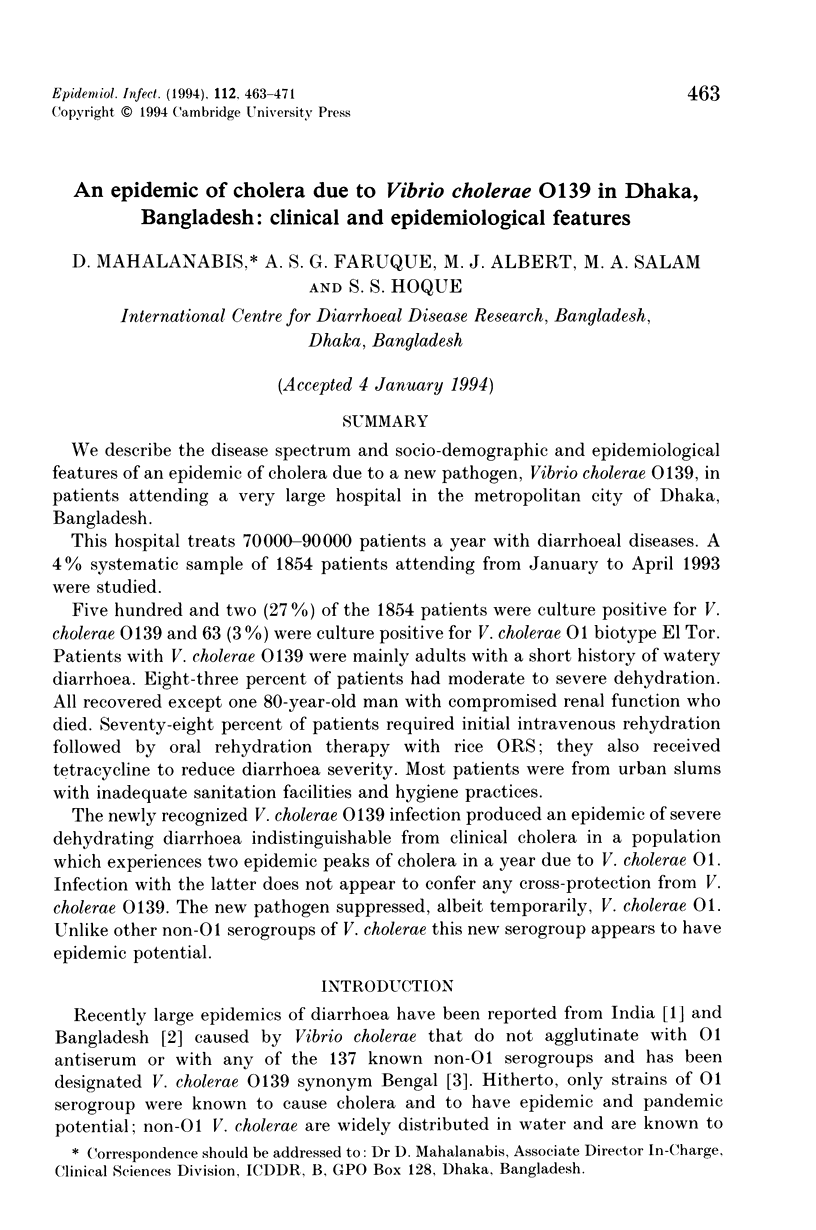
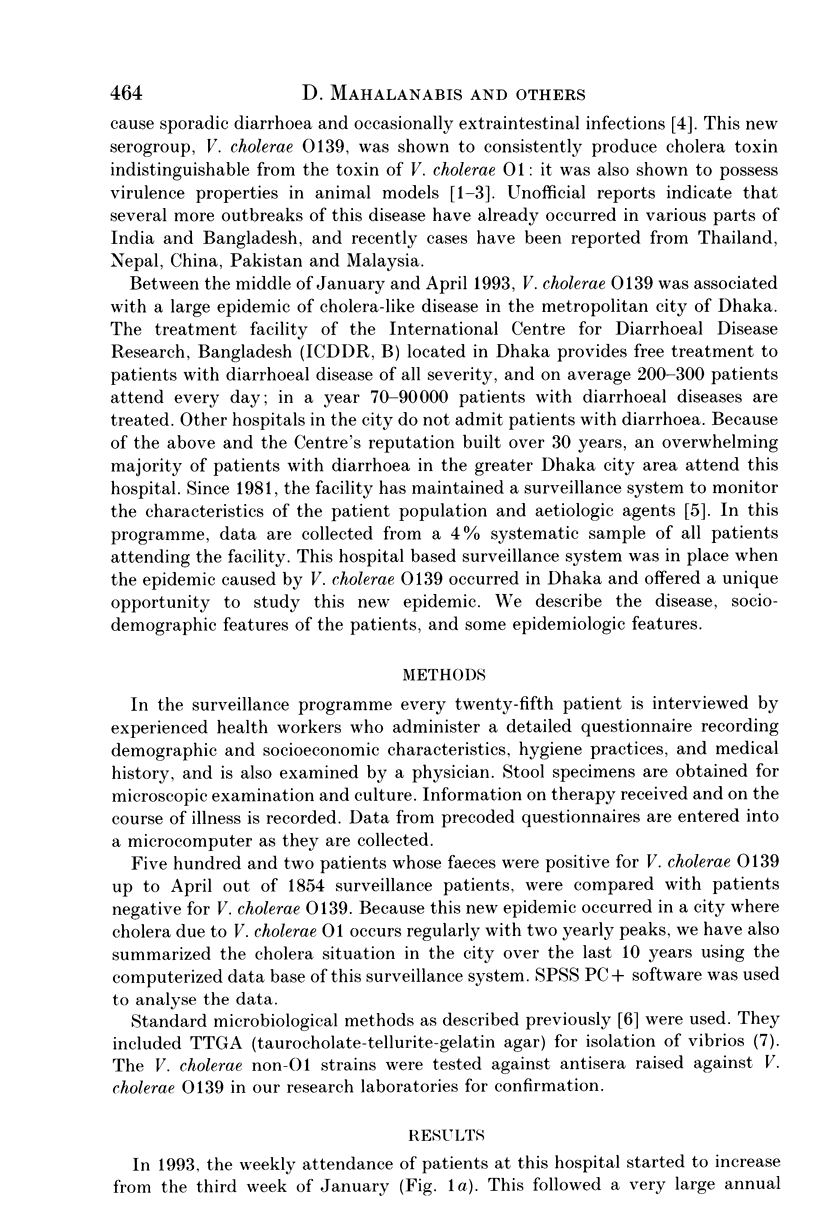
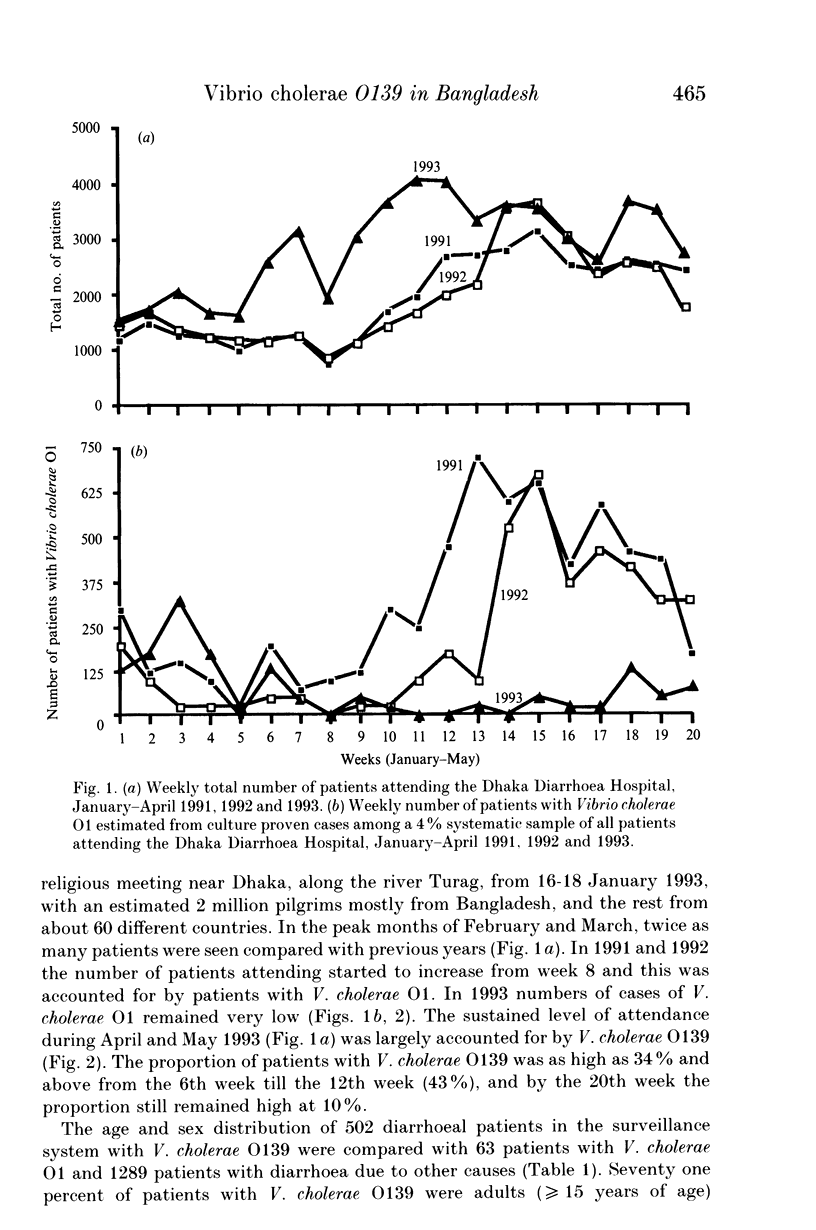
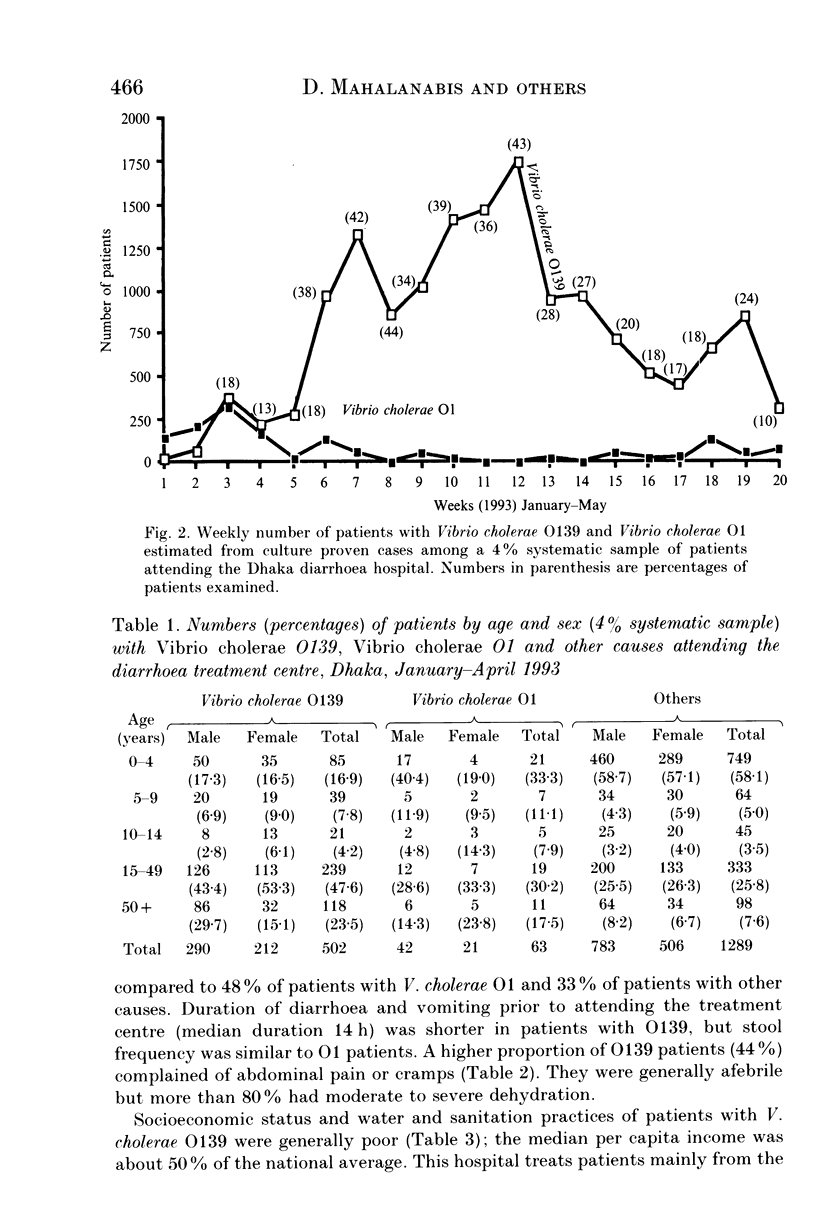
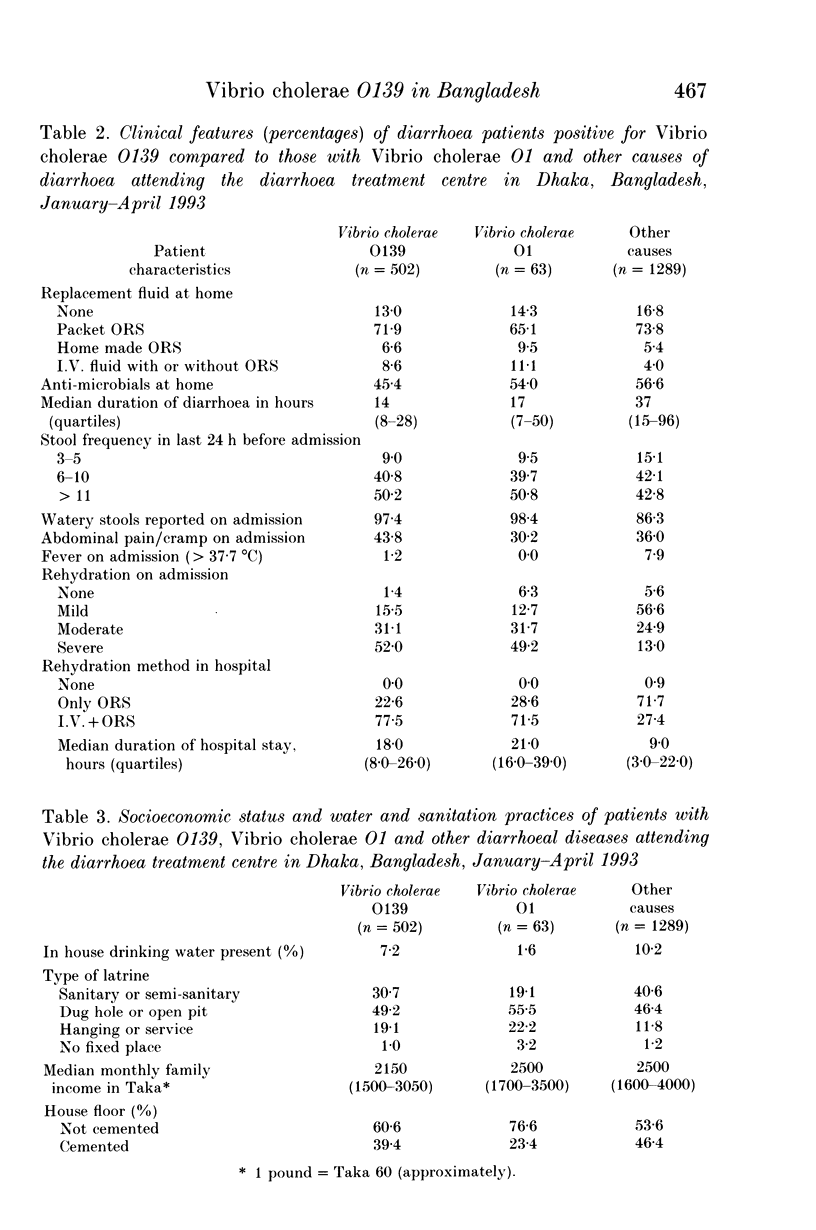
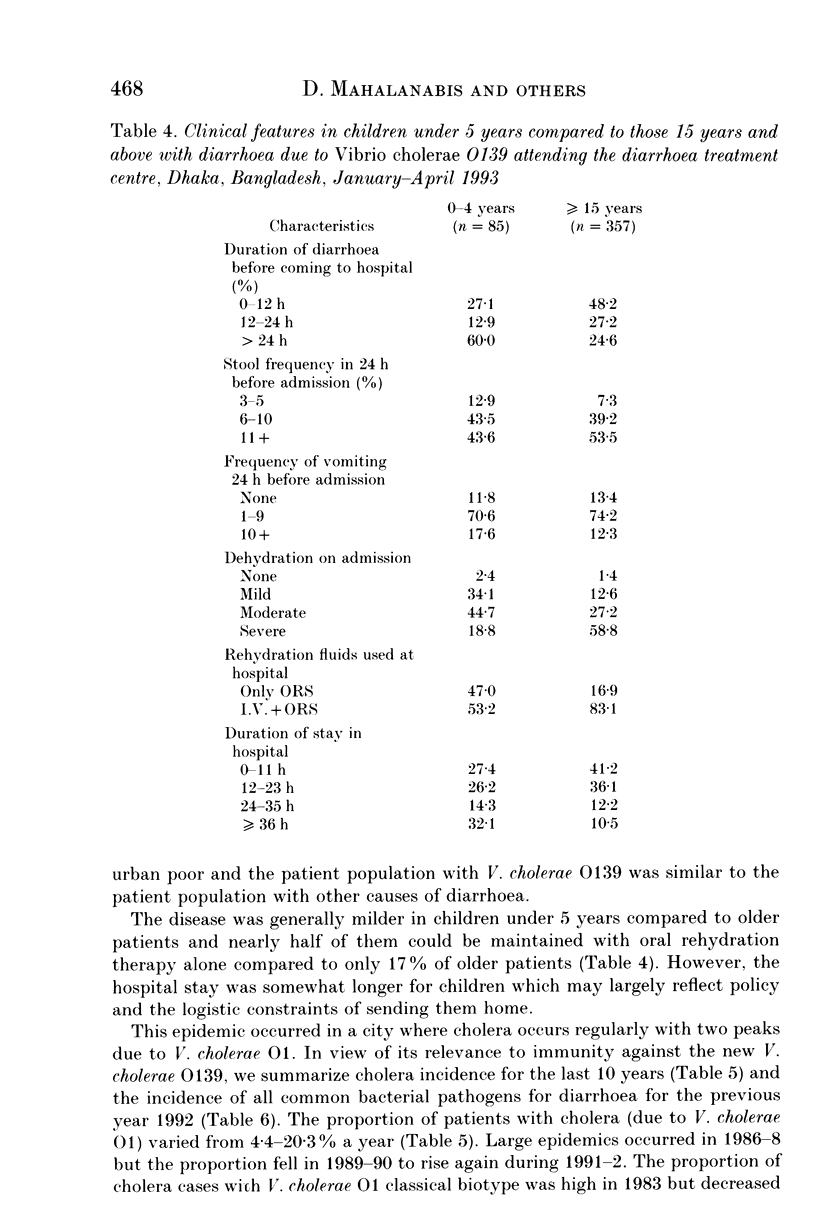
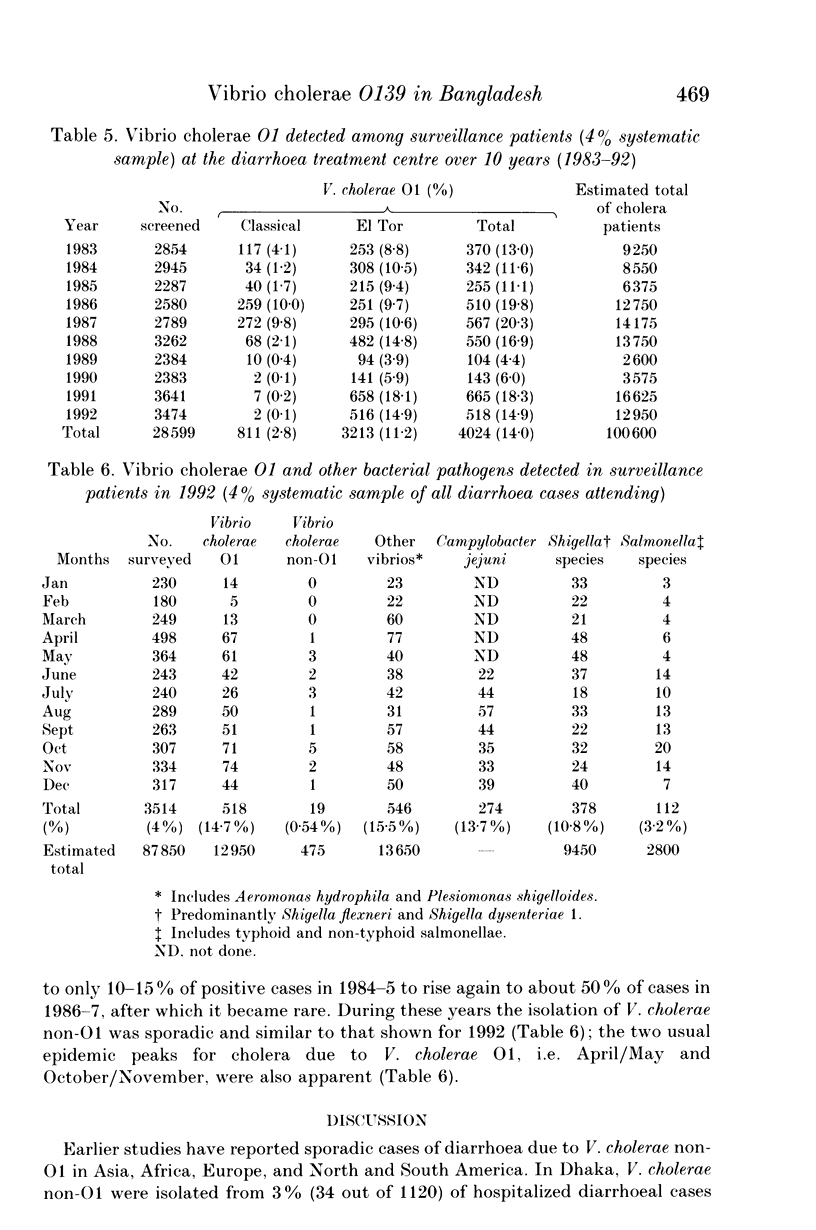
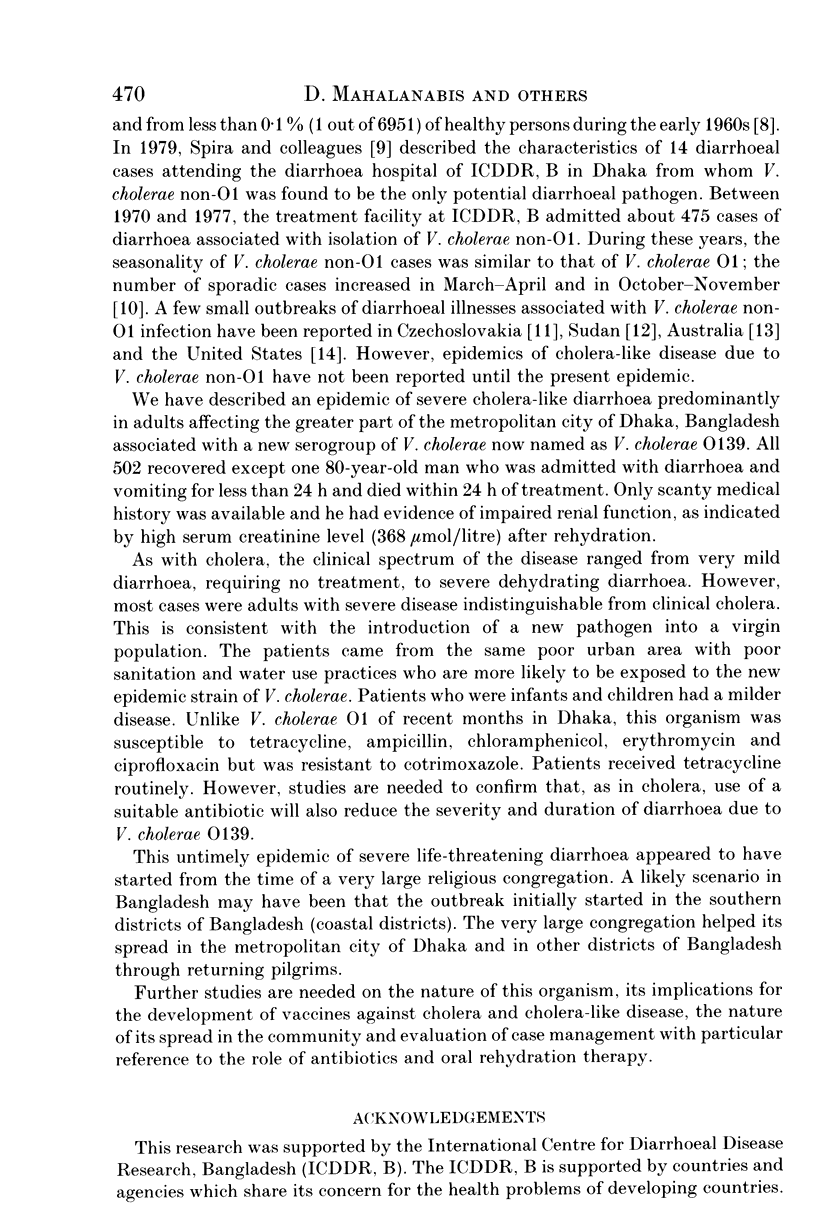
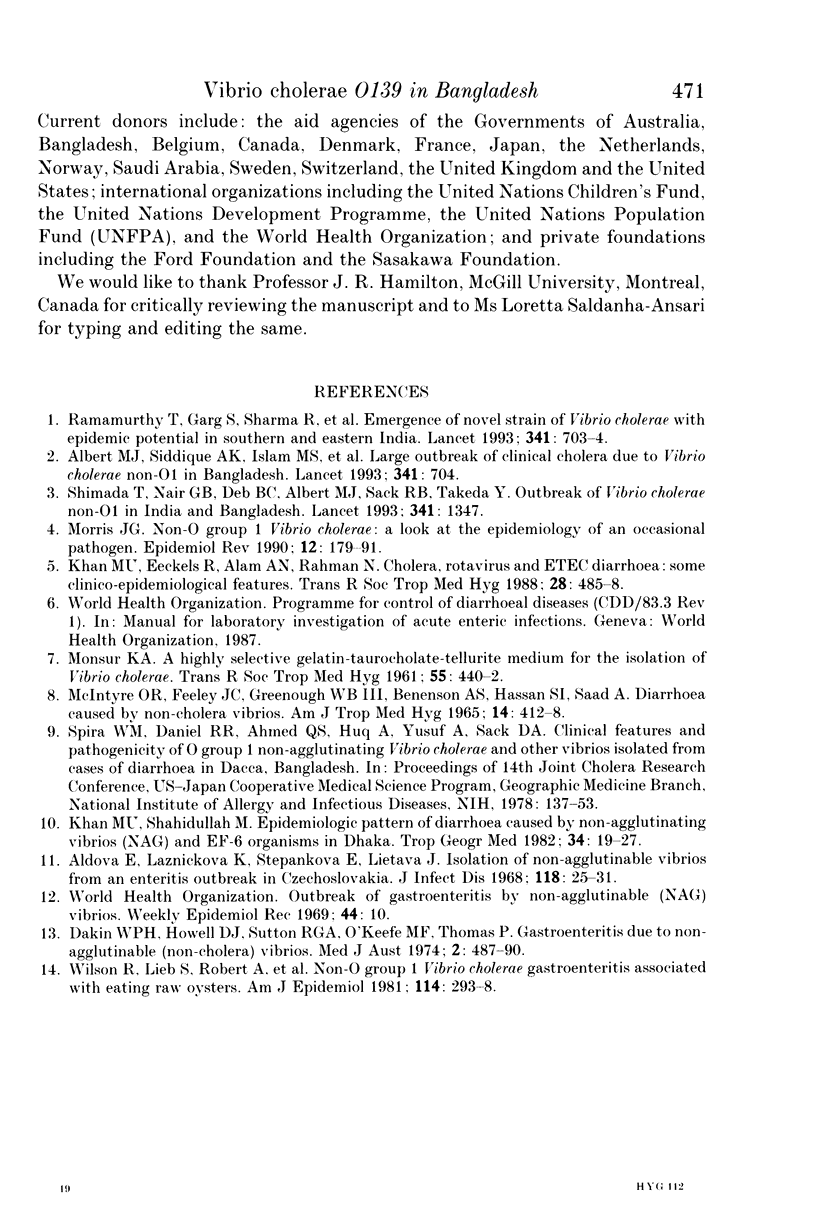
Selected References
These references are in PubMed. This may not be the complete list of references from this article.
- Albert M. J., Siddique A. K., Islam M. S., Faruque A. S., Ansaruzzaman M., Faruque S. M., Sack R. B. Large outbreak of clinical cholera due to Vibrio cholerae non-O1 in Bangladesh. Lancet. 1993 Mar 13;341(8846):704–704. doi: 10.1016/0140-6736(93)90481-u. [DOI] [PubMed] [Google Scholar]
- Aldová E., Láznicková K., Stepánková E., Lietava J. Isolation of nonagglutinable vibrios from an enteritis outbreak in Czechoslovakia. J Infect Dis. 1968 Feb;118(1):25–31. doi: 10.1093/infdis/118.1.25. [DOI] [PubMed] [Google Scholar]
- Bhattacharya M. K., Bhattacharya S. K., Garg S., Saha P. K., Dutta D., Nair G. B., Deb B. C., Das K. P. Outbreak of Vibrio cholerae non-O1 in India and Bangladesh. Lancet. 1993 May 22;341(8856):1346–1347. doi: 10.1016/0140-6736(93)90855-b. [DOI] [PubMed] [Google Scholar]
- Dakin W. P., Howell D. J., Sutton R. G., O'Keefe M. F., Thomas P. Gastroenteritis due to non-agglutinable (non-cholera) vibrios. Med J Aust. 1974 Sep 28;2(13):487–490. doi: 10.5694/j.1326-5377.1974.tb70935.x. [DOI] [PubMed] [Google Scholar]
- Khan M. U., Eeckels R., Alam A. N., Rahman N. Cholera, rotavirus and ETEC diarrhoea: some clinico-epidemiological features. Trans R Soc Trop Med Hyg. 1988;82(3):485–488. doi: 10.1016/0035-9203(88)90172-1. [DOI] [PubMed] [Google Scholar]
- Khan M. U., Shahidullah M. Epidemiologic pattern of diarrhoea caused by non-agglutinating vibrios (NAG) and EF-6 organisms in Dacca. Trop Geogr Med. 1982 Mar;34(1):19–27. [PubMed] [Google Scholar]
- MCINTYRE O. R., FEELEY J. C., GREENOUGH W. B., 3rd, BENENSON A. S., HASSAN S. I., SAAD A. DIARRHEA CAUSED BY NON-CHOLERA VIBRIOS. Am J Trop Med Hyg. 1965 May;14:412–418. doi: 10.4269/ajtmh.1965.14.412. [DOI] [PubMed] [Google Scholar]
- MONSUR K. A. A highly selective gelatin-taurocholate-tellurite medium for the isolation of Vibrio cholerae. Trans R Soc Trop Med Hyg. 1961 Sep;55:440–442. doi: 10.1016/0035-9203(61)90090-6. [DOI] [PubMed] [Google Scholar]
- Morris J. G., Jr Non-O group 1 Vibrio cholerae: a look at the epidemiology of an occasional pathogen. Epidemiol Rev. 1990;12:179–191. doi: 10.1093/oxfordjournals.epirev.a036052. [DOI] [PubMed] [Google Scholar]
- Ramamurthy T., Garg S., Sharma R., Bhattacharya S. K., Nair G. B., Shimada T., Takeda T., Karasawa T., Kurazano H., Pal A. Emergence of novel strain of Vibrio cholerae with epidemic potential in southern and eastern India. Lancet. 1993 Mar 13;341(8846):703–704. doi: 10.1016/0140-6736(93)90480-5. [DOI] [PubMed] [Google Scholar]
- Wilson R., Lieb S., Roberts A., Stryker S., Janowski H., Gunn R., Davis B., Riddle C. F., Barrett T., Morris J. G., Jr Non-O group 1 Vibrio cholerae gastroenteritis associated with eating raw oysters. Am J Epidemiol. 1981 Aug;114(2):293–298. doi: 10.1093/oxfordjournals.aje.a113194. [DOI] [PubMed] [Google Scholar]


